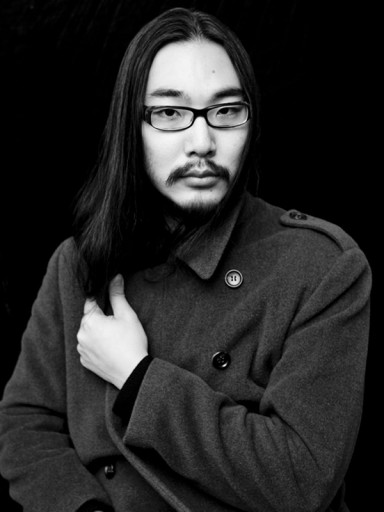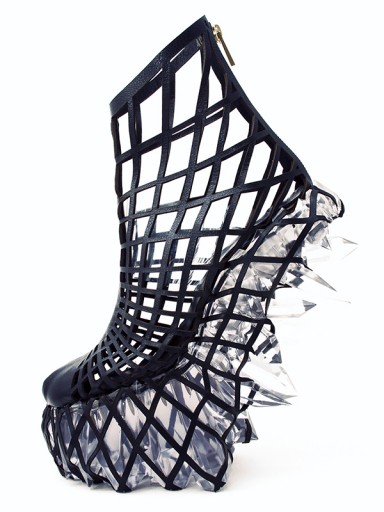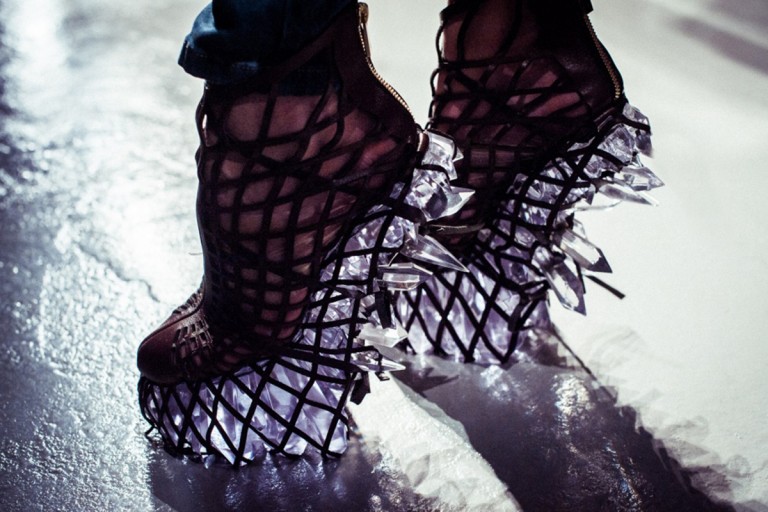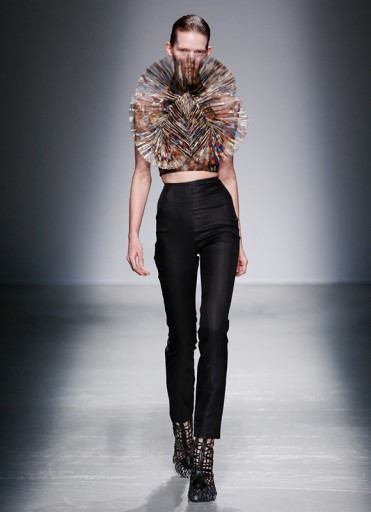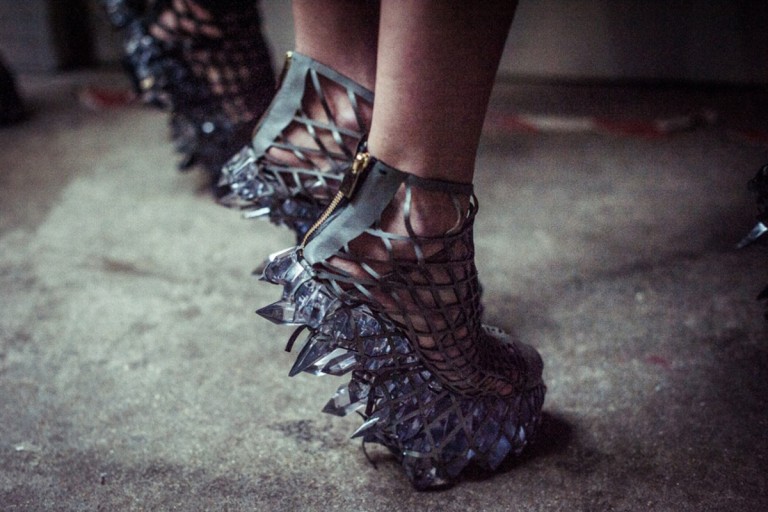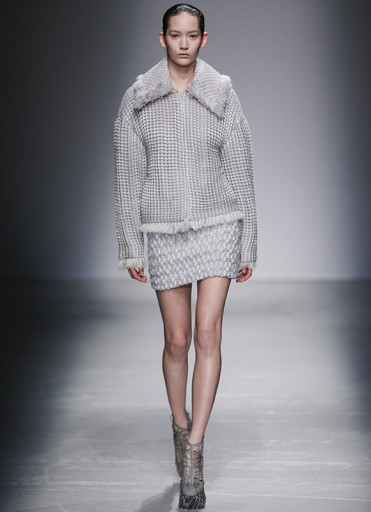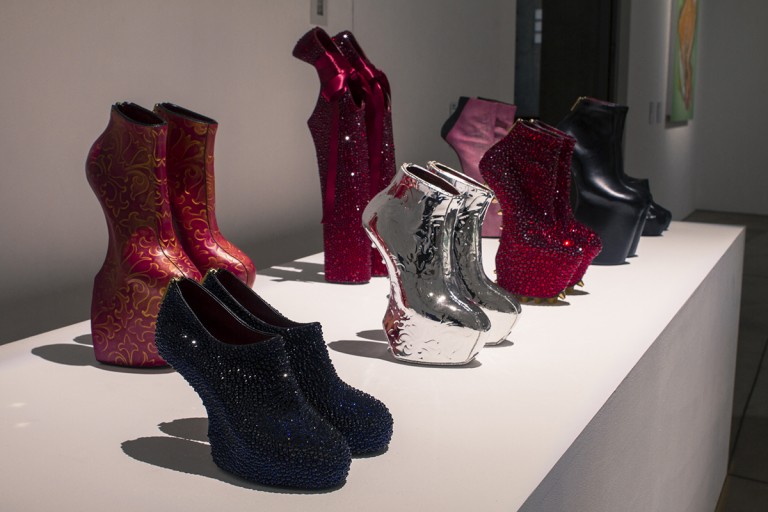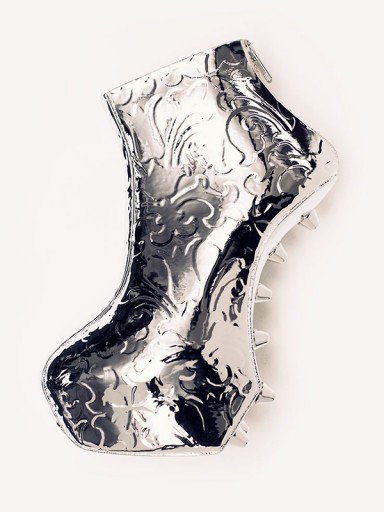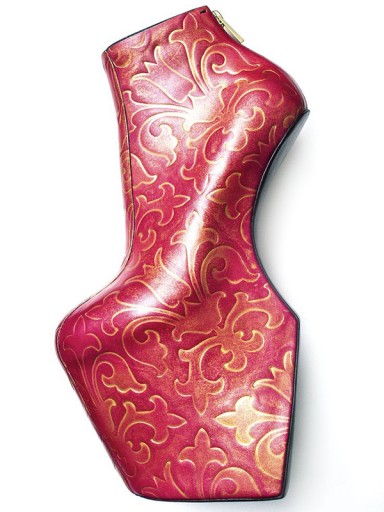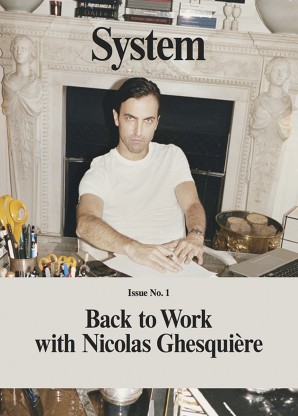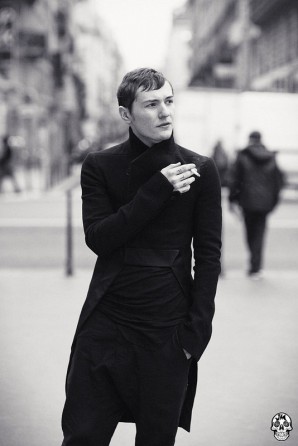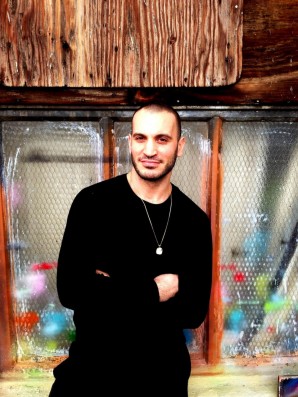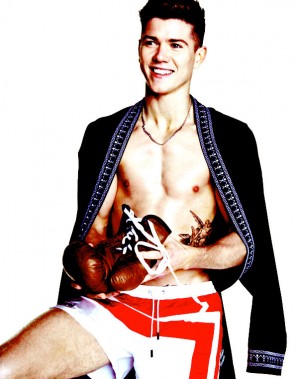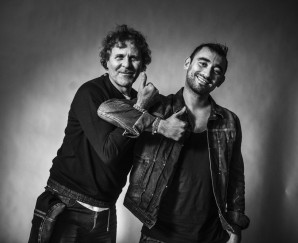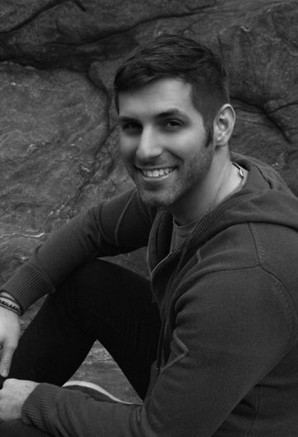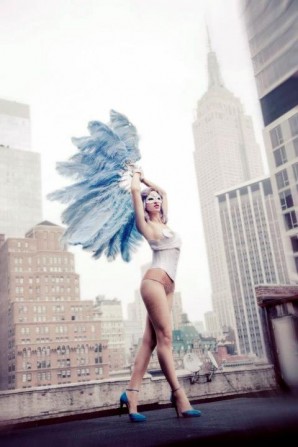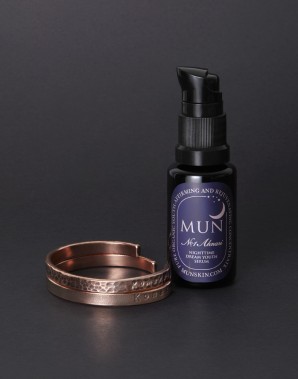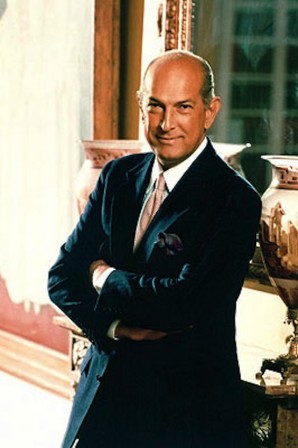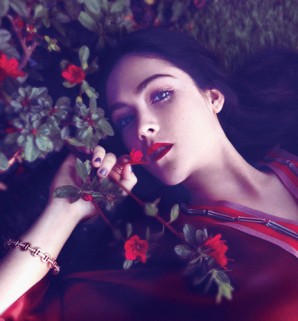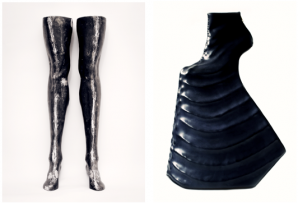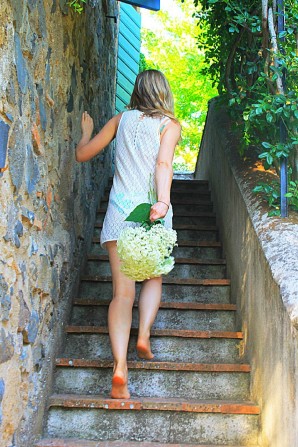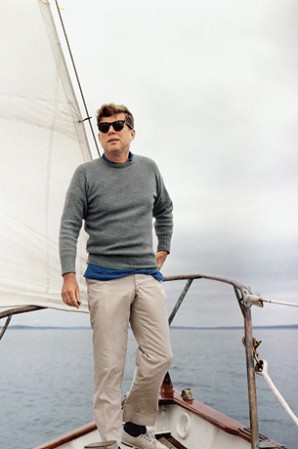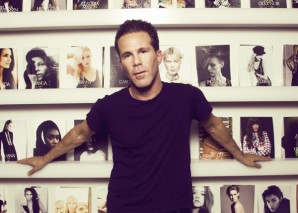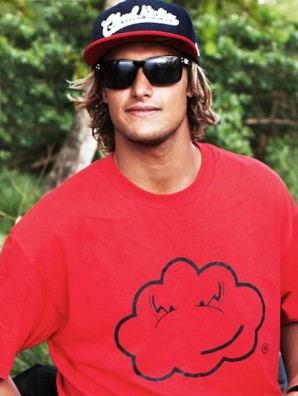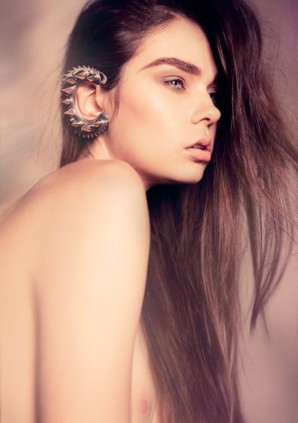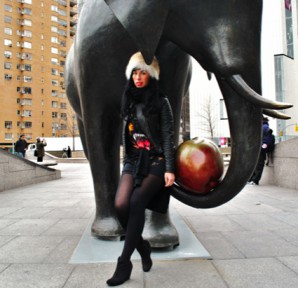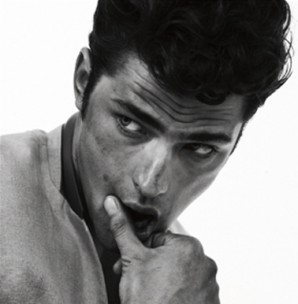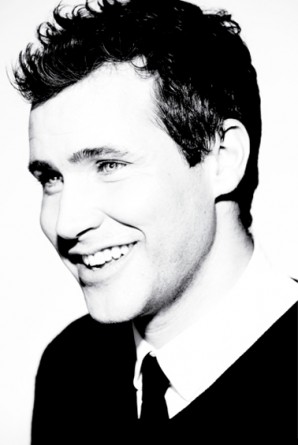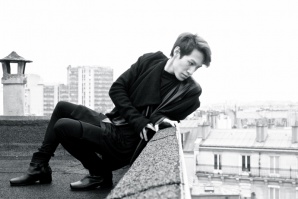After fifteen years at Balenciaga, Nicolas Ghesquière quietly left his post as creative director last November.
Noritaka Tatehana Exclusive Interview
The talented young Japanese designer, Noritaka Tatehana, who collaborated with Iris Van Herpen to design Lady Gaga’s shoes.
Today, Lady Gaga is probably one of the most famous pop artist of the 21st century. Regarding Lady Gaga’s style, the “heelless shoe” could possibly be considered one of her most well-known and iconic accessories. Did you know that the person who created Lady Gaga’s iconic “heelless shoes” was just young 24-year-old Japanese designer named Noritaka Tatehana at that time?
On March 10th, 2015 Noritaka Tatehana unveiled his stunningly unconventional 3D crystal shoes at the collaborative show between himself and Iris Van Herpen at the Fall/Winter Paris Fashion Week Collection. These works of art/shoes have his signature lack of a heel and thrusting crystals as the platform. Recently, TWELV asked Mr. Tatehana about this collaboration with the Holland fashion brand, Iris Van Herpen which is known for its unique and futuristic design.
---------- Noritaka Tatehana's Interview ----------
1. What was the beginning of this collaboration with Iris Van Herpen?
I’d never meet her before, but I knew of her. I was thinking that our direction for the brand is quite similar and we also have a mutual friend, Daphne Guinness, so I’ve always been thinking that if we were to do something together, it would be really interesting.
One day, she came to Japan for the event of a collaboration with Dom Perignon, and I was also invited the event, so I said hello. Then she asked to collaborate with me. So that was the beginning of this collaboration and I am very happy that I was able to be a part of it.
2. Was it time-consuming to produce the crystal shoes for the runway?
Honestly, that was incredibly hard work. When I normally make the shoes, I don’t fill the inside of platform with material, so usually the inside is empty. However, for this time, it didn’t look bright and clear if I made it like that. That’s why I had to fill the inside of platform with the material. It meant the shoes would be really heavy, so I had to think about two things at the same time: confortance and function. It was because of the models that they worked on the runway!
3. What were the good points of collaborating with her?
The greatest thing for me was that I could stimulate the young designers because of this collaboration at Paris collection. In most cases, a lot of young Japanese designers can’t go to Paris Fashion Week on their own ability, they need a sponsor or something. I didn’t want to go that way. I wanted to go to that kind of stage by myself, so I think that was the greatest thing, that I could do this with no support. Actually, I think collaborating with a foreigner designer like this time is surely spreads the world.
4. What’s your inspiration for usual shoes making?
I was born in 1985, so that was about 40 years after the world war. It means that there were so many histories that I didn’t know. The Japan of today required so many turning points like Meiji-Ishin, the revolution of the Emperor, and a World War.
And our generation didn’t know that, right? So we live without knowing about these histories and when I became artist with this job, I realized that artists especially need a sociability. “Sociability” means not only thinking about oneself, but also society as a whole. For example, thinking of the position of Japan in this world, or thinking of one’s position in Japan, and thinking what one should do. Artists need to have this kind of consciousness. Ultimately, I felt that the thing that I couldn’t choose was my fate; like to be born as a man, or to be born in Japan or something like that. Then, I decided to learn about it, about “the background of my background”. So perhaps inspiration might come from in my own mind.
5. Why do you think Japanese culture is important to you?
The main reason is that “I cannot choose my nationality.” Being Japanese, this could be my destiny, or it could be a necessity. I was too familiar with Japanese culture to tell the difference between views from foreigners seeing the Japanese and views from Japanese people seeing themselves when I was in Japan. After I stepped out of Japan, I felt that foreigners think that the Japanese are inspired by their own culture. For instance, in Japan, European-style goods are very popular because they are unique in Japan. In other words, I guess the identity of the country is really important.
6. How were you inspired by Oiran?
In university, I was studying about the Kimono as traditional Japanese fashion. However, there are many different types of Kimono: for citizens, for feudal lords, etc. Oiran fashion was really avant-garde at that time in Japan, and I was studying fashion which was tricky and eye-catching. So it quite matched with what I was seeking. I think it’s the same as young girls wearing Jeremy Scott to intimate Katy Perry.
7. You said that you want to be seen as a craftsman, more than to be considered an artist. To you, what’s the difference between them?
Now I don’t do every process from start to the end when I make shoes, but I have a feeling that I always want to be a craftsman. If I stop making the shoes with my hands, there will be so many things that I can’t comprehend for real. For instance, when I say “let’s make this shoe with this material” without knowing about the function, it doesn’t come out right. That’s meaningless. Because of this reason, I prefer to keep being a craftsman. And I think this is also good point of Japan too. For example there are many famous Japanese manufactures like the auto-mobile maker, Honda and the instrument maker, KAWAI whose founders were all craftsmen. A lot of Japanese people don’t know this story, but these companies support this country with great achievement. And the CEO of famous companies like these in Japan are usually creators and craftsmen. Of course, I have to go for the business side sometimes, but I always want to be a craftsman because I want support Japanese industry like them. But my mind might be an artist all the time.
8. What is your ultimate goal?
I felt that being an artist seems a really personal job, but it actually really isn’t a personal job. I felt this way after I started to work as an artist professionally. This is my life, but an artist's job is reflecting the era at that time. Their artwork should link to their mind and what’s happening at that time in their country, and I think artists need to make it work during the changes in periods. Speaking of my own experience, 2010 was a turning point in Japanese fashion. The changes in the era and artists should be linked to historical events happening, like world affairs or natural disasters.
My work is collected by a lot of museums, but museums are where human history is stored. For example, Strawberry Fields by Yoko Ono, this kind of creation has a message worth remembering. I don’t know when I will die, so I think my mission is to form the era exactly and then to turn it over to the next generation because I feel I’m required to do this kind of thing.
9. You always had a dream to work around the world. Do you feel that your life is exactly what you wanted now?
Because I wanted to work around the world, I had a specific vision and I did complete each objective one by one.
So almost everything is exactly as I wanted. Now I can do what I wanted, and I am more successful than I could have imagined, and I don’t feel that I have failed more than I expected. I suppose that preparation is really important. I’m glad that I kept continuing with what I wanted. When I didn't pass the university entrance exam, my grandmother said “Quit. You have no talent.” But I didn’t quit at that time and I think that was great decision. You have to decide your way by yourself. That is the most important thing in life.
10. Please leave a message to young boys and girls.
I don’t want them to imitate, but use. I mean I was the one who really imitated society, so I was thinking that I will be the top because I don’t want to be thought as the same designer as that one who I don’t think great. But when you imitate something, it’s when you are jealous for it at the same time. So I guess if there are some people who imitate me because I showed in Paris Fashion Week this time, I don’t want them to imitate, but to look closer. In other words, I hope they use my experience as a tool and study. This time, I worked with foreign people and I could attend Paris Fashion Week in the end. With this opportunity, I think I could show the same things as they do.
I had times when I was really imitating society, but when I try to out to the world, the people who I referred to were predecessors like Issei Miyake, Takashi Murakami, and many other successful people. I think I wouldn’t be successful if they did not exist. So in order to see as a reference, I want young designers to use my work as a case study. I can say anything like “hang in there with big dream!” or something. If I can provide something, it will be this kind of information. That would be the most influential information I guess.
INTERVIEWED & WRITTEN BY: MARIE ABE
PHOTO CREDIT: NORITAKA TATEHANA, TEAM PETER STIGTER, MORGAN O'DONOVAN
EDIT BY: SUSAN SCHELL
related posts
Dismay, Danger and Discovery: Nicolas Ghesquière's Untold Story Revealed
IKEMEN #9: LISA LARSSON
IKEMEN (ē´k´mɛn): Japanese Slang
"REALLY, REALLY, RIDICULOUSLY GOOD LOOKING PEOPLE"
IKEMEN #8: HOGAN MCLAUGHLIN
IKEMEN (ē´k´mɛn): Japanese Slang
"REALLY, REALLY, RIDICULOUSLY GOOD LOOKING PEOPLE"
Donna Karan: Million Hearts for Haiti Project
Designer Donna Karan is sending some love down to Haiti.
IKEMEN #7: Salvatore Morale
IKEMEN (ē´k´mɛn): Japanese Slang
"REALLY, REALLY, RIDICULOUSLY GOOD LOOKING PEOPLE"
IKEMEN #6: LUKE CAMPBELL
IKEMEN (ē´k´mɛn): Japanese Slang
"REALLY, REALLY, RIDICULOUSLY GOOD LOOKING PEOPLE"
NICOLA FORMICHETTI: The Art of Deconstruction
Between the time of the confirmation of his departure and the publication of this article, you certainly had time to digest the new news about Nicola Formichetti.
IKEMEN #5: Matthew Scheier
IKEMEN (ē´k´mɛn): Japanese Slang
"REALLY, REALLY, RIDICULOUSLY GOOD LOOKING PEOPLE"
IKEMEN #4: Brian Ermanski
IKEMEN (ē´k´mɛn): Japanese Slang
"REALLY, REALLY, RIDICULOUSLY GOOD LOOKING PEOPLE"
IKEMEN #3: Ekaterina Murphy
IKEMEN (ē´k´mɛn): Japanese Slang
"REALLY, REALLY, RIDICULOUSLY GOOD LOOKING PEOPLE"
IKEMEN #2: Martina Markota
IKEMEN (ē´k´mɛn): Japanese Slang
"REALLY, REALLY, RIDICULOUSLY GOOD LOOKING PEOPLE"
IKEMEN #1: Thanos Samaras
IKEMEN (ē´k´mɛn): Japanese Slang
"REALLY, REALLY, RIDICULOUSLY GOOD LOOKING PEOPLE"
INTERVIEW: HAIM? Never heard of them
Haim (pronounced Hime) are three sisters who put most of their male counterparts to shame. This girls completely own rock 'n' roll.
MUN No.1 Aknari
Makeup artist and beauty expert Munemi Imai's organic nighttime youth serum, No.1 Aknari nourishes and repairs your...
OSCAR DE LA RENTA: AN AMERICAN ICON
For decades now, Oscar de la Renta has been synonymous with pure American luxury, dressing the upper-east side’s ladies who lunch, Hollywood’s red carpet, and first ladies from Jacqueline Kennedy-...
Hunger Games Starlet, Isabelle Fuhrman
今月28(金)日本公開映画「ザ・ハンガー・ゲーム」で決死の殺し合いゲームに挑むクローブ役の15歳の少女、イザベル・ファーマンが本誌に演技や、恋愛について語ってくれた。
What's Zombie Boy Like on the Inside?
Nicola Formichetti’s muse is a walking Mugler moodboard. To Mugler, rare is remarkable. And Genest is nothing if not a celebration of the rare.
Blog Party: WILL PRINCE
Julia Lang is the 25 year old blogger behind www.geeksndfashion.com.
Noritaka Tatehana
Shoe designer Noritaka Tatehana harnesses his secret forces of shoe construction to snag the attention of international fashionistas like Lady Gaga and Daphne Guiness.
Blog Party: Dreamland
We are all different with one distinguishing similarity; we all have that special place in the back of our minds, the “box” as we’d like to name it, in which we store our biggest dreams, greatest...
LA BEAU DUNN
Hollywood it-girl, Beau Dunn, multi-talented model, actress, artist and philanthropist, was born and raised in Beverly Hills, the daughter of a...
Blog Party: Ciao Summer
Joanne Hegarty is a London based blogger and journalist who writes daily posts on how to live stylishly through fashion, interiors and food.
Blog Party: Why I Love The Classics
It’s recently dawned on me how most things in life are cyclical - everything eventually comes back around for a second play; rock n’ roll bands had their day in the 60’s and again in the 90’s;...
A Strong Man: Scott Lipps
As CEO and founder of one of the world’s most prestigious modeling agencies, the orchestrator behind a premier fashion blog, the star of an E reality TV show, and the drummer...
Pro-Surfer Andres Carreras Makes a Splash with new Sponsor, Cloud Kicker
J. Andres Carreras was born in 1991 and is a pro surfer from Aguadilla, Puerto Rico. Though only 21 years of age, Carreras has been surfing for 9 years.
Blog Party: You don’t wear your Clothes, you wear your Attitude.
...
Blog party: There is no such thing as your instinct
Julia Lang is the 25 year old blogger behind www.geeksndfashion.com.
Blog party: Nautical but Nice
My name is Joanne Hegarty and I write the blog, Ballet Pumps And Roses, which has daily posts on living stylishly through...
blog party: Hidden Treasures
Nayla , Noor and Rawdah Al Naimi are the three sisters behind the blogs Cocoa Butter, Celebrities Style and Unbreakable Diamond.
Mischa Barton – The Full Interview with TWELV mag Issue: 001
Mischa Barton – The Full Interview.
Issue: 001
blog party: One, Two, THREE FLOOR!
Julia Lang is the 25 year old blogger behind www.geeksndfashion.com.
Good Ol’ Georgia Boy
Sean O’Pry, Fashion’s hottest male model get’s a dirty makeover and muses about the simple life.
DJ-ing his Way From England to L.A.: Zen Freeman Opens up to TWELV About his Latest Endeavors
“A celebrity in his own right, [Zen Freeman] DJs and promotes for the hottest events and venues worldwide.
A Shining Example: Lauren Bush On the Noble Mission of Curing Hunger Through Fashion.
When it comes to using fashion as a force for profound humanitarian good, Lauren Bush has cornered the market.
blog party: Paris Gone Wild
Eric Waroll is the fashion editor and blogger of EricWaroll.com. At just 21, he is quickly becoming a significant part of the young Paris fashion scene.

